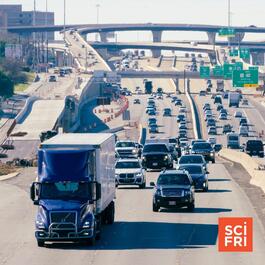
Why Do We Keep Widening Highways If It Doesn’t Reduce Traffic?
Have you ever been stuck in traffic and thought, if only this highway was a little wider so it could fit more cars? You aren’t alone. Many states have been expanding their highways. New York Governor Kathy Hochul recently announced a $1.3 billion project to expand one of the state’s highways for an estimated maximum six-minute travel savings. Other highway-widening projects are underway in Texas, California, and Maryland. In 2022, federal, state, and local governments in the US spent $127 billion on highway construction. Some departments of transportation say expanding highways is necessary to reduce congestion, especially in areas with growing populations, and to encourage economic development. But decades of research shows the opposite effects when highways are expanded—that travel times actually increase when more lanes are added. So how does this happen, and why do we keep expanding highways even though the research says it doesn’t work? Megan Kimble, journalist and author of City Limits: Infrastructure, Inequality, And The Future Of America’s Highways, joins Ira to break down the research behind highway widening and discuss how increasing funding for public transit could help make traffic better, and why some cities are deciding to remove their highways entirely. Read an excerpt from City Limits: Infrastructure, Inequality, And The Future Of America’s Highways. Transcript for this segment will be available after the show airs on sciencefriday.com. Subscribe to this podcast. Plus, to stay updated on all things science, sign up for Science Friday's newsletters.
From "Science Friday"


Comments
Add comment Feedback